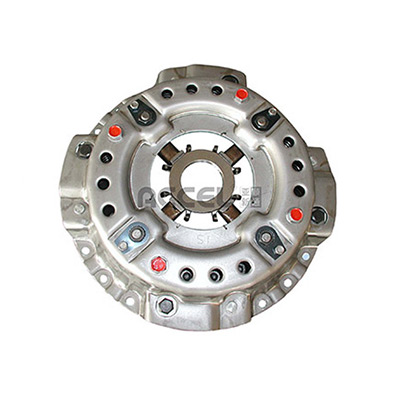- Arabic
- French
- Russian
- Spanish
- Portuguese
- Turkish
- Armenian
- English
- Albanian
- Amharic
- Azerbaijani
- Basque
- Belarusian
- Bengali
- Bosnian
- Bulgarian
- Catalan
- Cebuano
- Corsican
- Croatian
- Czech
- Danish
- Dutch
- Afrikaans
- Esperanto
- Estonian
- Finnish
- Frisian
- Galician
- Georgian
- German
- Greek
- Gujarati
- Haitian Creole
- hausa
- hawaiian
- Hebrew
- Hindi
- Miao
- Hungarian
- Icelandic
- igbo
- Indonesian
- irish
- Italian
- Japanese
- Javanese
- Kannada
- kazakh
- Khmer
- Rwandese
- Korean
- Kurdish
- Kyrgyz
- Lao
- Latin
- Latvian
- Lithuanian
- Luxembourgish
- Macedonian
- Malgashi
- Malay
- Malayalam
- Maltese
- Maori
- Marathi
- Mongolian
- Myanmar
- Nepali
- Norwegian
- Norwegian
- Occitan
- Pashto
- Persian
- Polish
- Punjabi
- Romanian
- Samoan
- Scottish Gaelic
- Serbian
- Sesotho
- Shona
- Sindhi
- Sinhala
- Slovak
- Slovenian
- Somali
- Sundanese
- Swahili
- Swedish
- Tagalog
- Tajik
- Tamil
- Tatar
- Telugu
- Thai
- Turkmen
- Ukrainian
- Urdu
- Uighur
- Uzbek
- Vietnamese
- Welsh
- Bantu
- Yiddish
- Yoruba
- Zulu
Th10 . 07, 2024 06:19 Back to list
engine belt cost
Understanding Engine Belt Costs Key Factors and Considerations
When it comes to maintaining a vehicle, one of the often-overlooked components is the engine belt. Engine belts, which include timing belts and serpentine belts, play a critical role in the functioning of an engine, connecting various components like the alternator, air conditioning compressor, and water pump. However, understanding the cost associated with these essential parts is crucial for vehicle owners and mechanics alike.
Types of Engine Belts and Their Costs
There are generally two main types of engine belts timing belts and serpentine belts
.1. Timing Belts These belts are essential for synchronizing the rotation of the crankshaft and camshaft, allowing for the proper timing of the engine's valves. Timing belts can cost anywhere from $50 to $200 for the part alone, depending on the make and model of the vehicle. However, the real expense comes with the labor involved in replacing them. Replacing a timing belt is often a labor-intensive process as it may require disassembling various engine components. The total cost for timing belt replacement, including parts and labor, can range from $400 to $1,000.
2. Serpentine Belts Unlike timing belts, serpentine belts drive multiple accessories in the vehicle. They are generally less expensive, costing between $25 and $75 for the belt itself. Replacing a serpentine belt is typically more straightforward and less labor-intensive, often costing between $100 and $300 total.
Factors Affecting Engine Belt Costs
engine belt cost

1. Vehicle Make and Model The type of vehicle greatly influences the cost of engine belts. Luxury or performance vehicles typically require specialized parts that are more expensive. Conversely, standard vehicles may have more affordable options available.
2. Performance Requirements High-performance or heavy-duty engines may require belts made of higher quality materials, such as reinforced rubber or composite materials, which can drive up the cost.
3. Replacement Intervals Engine belts have specific replacement intervals, often recommended by the manufacturer in the vehicle’s owner manual. Neglecting to replace a worn belt can lead to more severe engine damage and higher repair costs in the long run. Preventative maintenance is essential for cost-effective vehicle ownership.
4. Labor Costs The cost of labor can vary widely based on geographic location and the experience level of the mechanic. Urban areas typically have higher labor costs due to demand, whereas rural areas might offer lower rates.
5. DIY Options For those with mechanical skills, replacing an engine belt can be a DIY project, significantly reducing costs. However, proper knowledge and tools are crucial to avoid further complications.
Conclusion
In summary, engine belt costs can vary significantly depending on several factors, including the type of belt, the vehicle make and model, and labor expenses. Understanding these costs and the importance of regular replacement can help vehicle owners make informed decisions about maintenance and repairs. Investing in preventative care for engine belts not only ensures smoother performance and longevity of the engine but also saves money by avoiding costly repairs down the line. Whether you opt for a dealership, a specialized shop, or a DIY approach, being proactive about engine belt maintenance is paramount for any vehicle owner.
-
Korean Auto Parts Timing Belt 24312-37500 For Hyundai/Kia
NewsMar.07,2025
-
7PK2300 90916-T2024 RIBBED BELT POLY V BELT PK BELT
NewsMar.07,2025
-
Chinese Auto Belt Factory 310-2M-22 For BMW/Mercedes-Benz
NewsMar.07,2025
-
Chinese Auto Belt Factory 310-2M-22 For BMW/Mercedes-Benz
NewsMar.07,2025
-
90916-02660 PK Belt 6PK1680 For Toyota
NewsMar.07,2025
-
drive belt serpentine belt
NewsMar.07,2025

